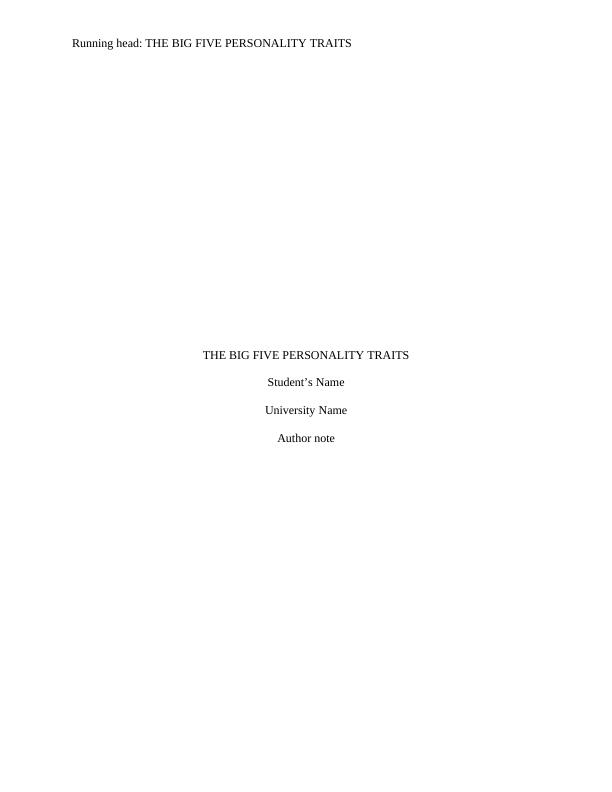The Big Five Personality Traits
This assignment requires a critical analysis of the topic of personality using Organisational Behaviour theory. The essay should include sections on introduction, analysis of the 'Big Five' personality dimensions, application of the theory in managerial scenarios, conclusion, and reference list.
7 Pages1667 Words55 Views
Added on 2023-01-05
About This Document
This essay critically analyzes the Big Five personality traits and their impact on organizational behavior, job performance, and motivation. The five traits include agreeableness, conscientiousness, neuroticism, extraversion, and openness. The analysis explores how these traits can be used by managers and leaders to understand and motivate employees, improve job performance, and enhance teamwork.
The Big Five Personality Traits
This assignment requires a critical analysis of the topic of personality using Organisational Behaviour theory. The essay should include sections on introduction, analysis of the 'Big Five' personality dimensions, application of the theory in managerial scenarios, conclusion, and reference list.
Added on 2023-01-05
ShareRelated Documents
End of preview
Want to access all the pages? Upload your documents or become a member.
Personality Trait Change Through Intervention
|6
|1345
|20
(PDF) Relationship Between Empathy and Personality Traits
|13
|2759
|349
Organizational Behavior: Understanding Human Behavior in Organizations
|4
|1675
|73
Report | Aspects in Human Resource Management
|49
|14684
|31
The Organizational Behavior | Assignment
|10
|2334
|227
Impact of Individual Employee Personality on Team
|8
|2164
|33



